Reviews get worse, but Hobbit heading for billion-dollar box office
Sir Peter Jackson's film should set December opening record, says market tracker.
Sir Peter Jackson's film should set December opening record, says market tracker.
The Hobbit: An Unexpected Journey is heading for a billion-dollar haul, according Box Office Mojo.
Looking at the movie's theatre receipts in its opening days - including a predicted record December opening after a $US13 million from midnight screenings - the high-profile market tracker says it's hard to imagine a scenario where it won't gross $US300 million in the US, and $US700 million in overseas markets.
By comparison, Lord of the Rings: Return of the King (the highest grossing of Sir Peter's Rings trilogy) had a $US1.1 billion world-wide box office, making it the sixth-highest grossing movie of all time (or in 52th spot, if you allow for inflation).
The Hobbit's box office success comes despite mixed reviews. Influential aggregator Metacritic.com gives the film 58/100 based on the reviews of 40 critcs.
Early notices had New Zealand mainstream media reviewers enchanted, but the Hollywood trade press more dubious. Many found the first two hours dull and meandering, and the high-frame-rate 3D disconcertingly "hyper-real" (see below).
Some of the first wave of overseas mainstream media have been glowing, but the some have been savage.
The Daily Mail says the film has too many moments of tedium and repetition ... The good news is that within that overall failure are many successful elements: funny scenes, thrilling action, pathos, good acting and inventive direction."
"As a lover of cinema, Jackson’s film bored me rigid; as a lover of Tolkien, it broke my heart," wrote The Telegraph's Robbie Collin in one of the most widely quoted reviews.
"The movie lacks majesty," writes Time magazine's Richard Corliss.
"The running time is indefensible.
"It’s like the three-hour first cut, assembled by editors, of even the most modest film before the director says, 'O.K., now let’s make a movie out of this.'This Hobbit plays like a rough cut, with no deleted scenes left for DVD."
The better news: even when critics are being snide, the New Zealand scenary still gets good notices.
Hobbit draws local raves, overseas barbs
Dec 5: Unfortunately NBR ONLINE's ticket's to The Hobbit preview got lost in the mail, but here is a selection of what the world's press had to say.
The short story is that it looks like Sir Peter Jackson has another global hit on his hands, if perhaps not the scale of his Lord of the Rings trilogy.
Critics find it spectacular, but many also say it's slow to get going and overlong at three hours. Can one slim novel be stretched across three epic films?
Some also think its groundbreaking 3D at 48 frames per second (most movies are 25fps) works against the film, drawing attention to itself and undermining the viewer's suspension of disbelief.
Local critics are a lot more positive than those from overseas.
Here's what they had to say:
The Hobbit: An Unexpected Journey is stuffed with Hollywood's latest technology. The result is some eye candy that truly dazzles ... It's also overstuffed with, well, stuff. Prologues and sidestepping backstory. Long, boring councils among dwarves, wizards and elves.
The panoramas are like Middle-earth actually come to life, as though you're standing on a hill looking down at the hobbits' Shire. If Cameron's "Avatar" was like looking through a window at a fantastical landscape, "An Unexpected Journey" at 48 frames is like removing the glass so you can step on through.
But with great clarity comes greater vision. At 48 frames, the film is more true to life, sometimes feeling so intimate it's like watching live theater. That close-up perspective also brings out the fakery of movies. Sets and props look like phony stage trappings at times.
David Germain, Associated Press
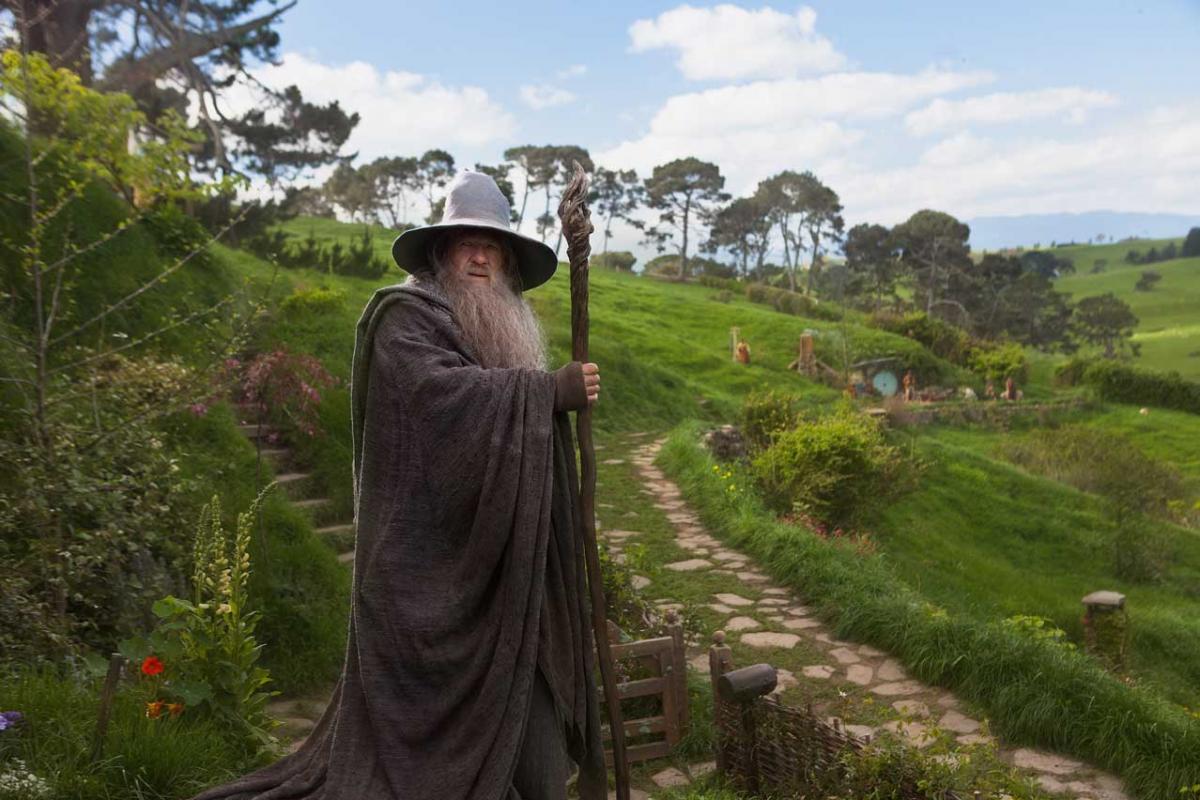
The Hobbit: An Unexpected Journey is soon snowballing its way thrillingly, often hilariously, to end at a point which is only six chapters into what was only a 19-chapter book.
That it takes nearly three hours to get only that far might seem excessive. But as lengthy as this first instalment is, it's a cracking start.
It's also a film which feels looser, funnier and often outright scarier than Jackson's last venture into this territory.
... It's also a film pioneering high definition 48 frames per second 3D ... I've suffered through some headache-inducing 3D in past years. But here, other than being initially disconcerted by the clarity and feeling my optic nerves recalibrating to the immersive effect - the dwarves' invasion of Bilbo's house has the weird intimacy of a stage play - I suffered no ill effects.
Russell Bailie, NZ Herald. Read full review here.
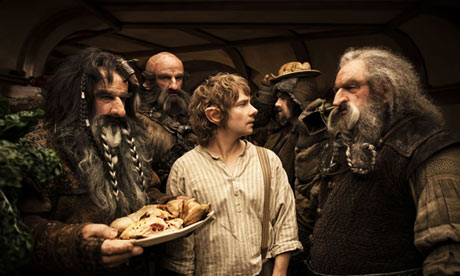
What the 48 frame-per-second projection actually means is flat lighting, a plastic-y look, and, worst of all, a strange sped-up effect that makes perfectly normal actions - say, Martin Freeman's Bilbo Baggins placing a napkin on his lap - look like meth-head hallucinations.
Jackson seems enamored of 48 fps, but I can't imagine why.
To me, it turned the film into a 166-minute long projectionist's error.
I wanted to ask the projectionist to double-check the equipment, but really, I should just ask Jackson why he wanted his $270 million blockbuster to look like a TV movie.
The Hobbit is just good enough to make you aware of how it could have been much, much better. If you take your kids - while shielding them from various nonhuman bad guys getting decapitated both repeatedly and, worse, bloodlessly - they'll have a good time.
Bilbo Baggins' quest for adventure and Warner Bros' quest for cash will take him through three films. But your quest for epic, truly entertaining filmmaking will be more successful if you just stay home.
James Rocchi, BoxOffice.com. Read the full review here.

The Hobbit: An Unexpected Journey is almost three hours long but I was left wanting more - partly because the story is unfinished and partly because it’s such a visual feast.
Samantha Hayes, TV3. Read full review here.
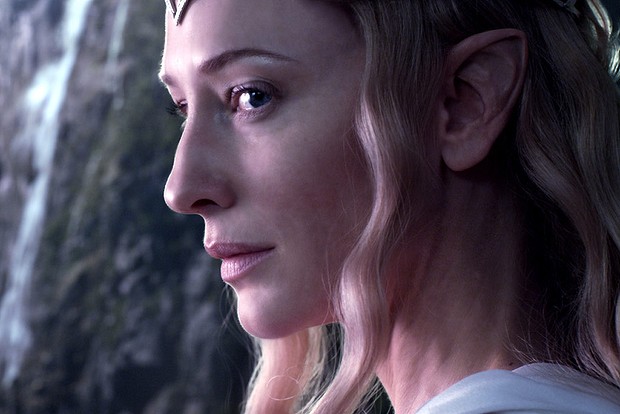
The Government certainly got its money's worth in wide and epic shoots of the country's sceneries. These should help to keep drawing tourists to New Zealand and firm its reputation as Middle-earth.
At times, the story could maybe have been told a tad faster, but we're talking Peter Jackson here.
When the credits start to roll to Neil Finn's Song of the Lonely Mountain, after nearly three hours, the theatre burst into applause and nobody I talked to complained of sickness or drowsiness after the 48fps experience, but felt perfectly immersed into Middle-earth.
Julie Scherer, Fairfax News. Read full review here.
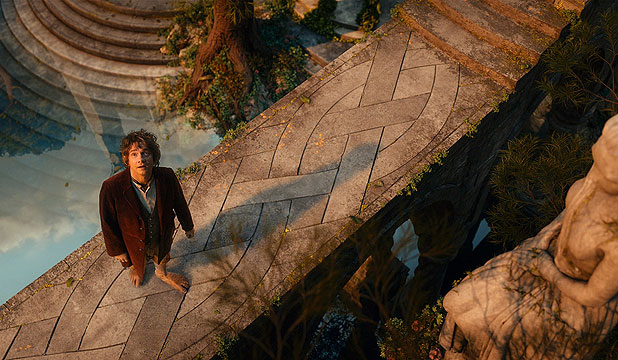
Jackson and his team seem compelled to flesh out the world of their earlier trilogy in scenes that would be better left to extended-edition DVDs (or omitted entirely), all but failing to set up a compelling reason for fans to return for the second installment.
Peter DeBruge, Variety. Read full review here.

As he needs to be at the heart of the movie, Freeman, best known for his roles in The Office, Love Actually and Sherlock, makes an appealing Bilbo, and there are solid performances by Ian McKellen as Gandalf, Cate Blanchett as Galadriel, Richard Armitage as dwarf leader Thorin Oakenshield and Sylvester McCoy as the eccentric wizard Radagast.
The battles are ferocious and a rousing finale sets up the second instalment in a year's time.
.... The high-definition image is sharp, almost startlingly so initially, but the format seems to distance the characters from the landscape.
There are moments when it feels like An Unexpected Journey was shot on a giant soundstage with deliberately artificial backdrops.
Garry Maddox, Sydney Morning Herald. Read full review here.

Magical, majestic, mystical and utterly masterful, The Hobbit is an enthralling,engrossing and unmissable return to Middle Earth (especially if you’re a committed LOTR fan).
Darren Beven, TVNZ. Read full review here.
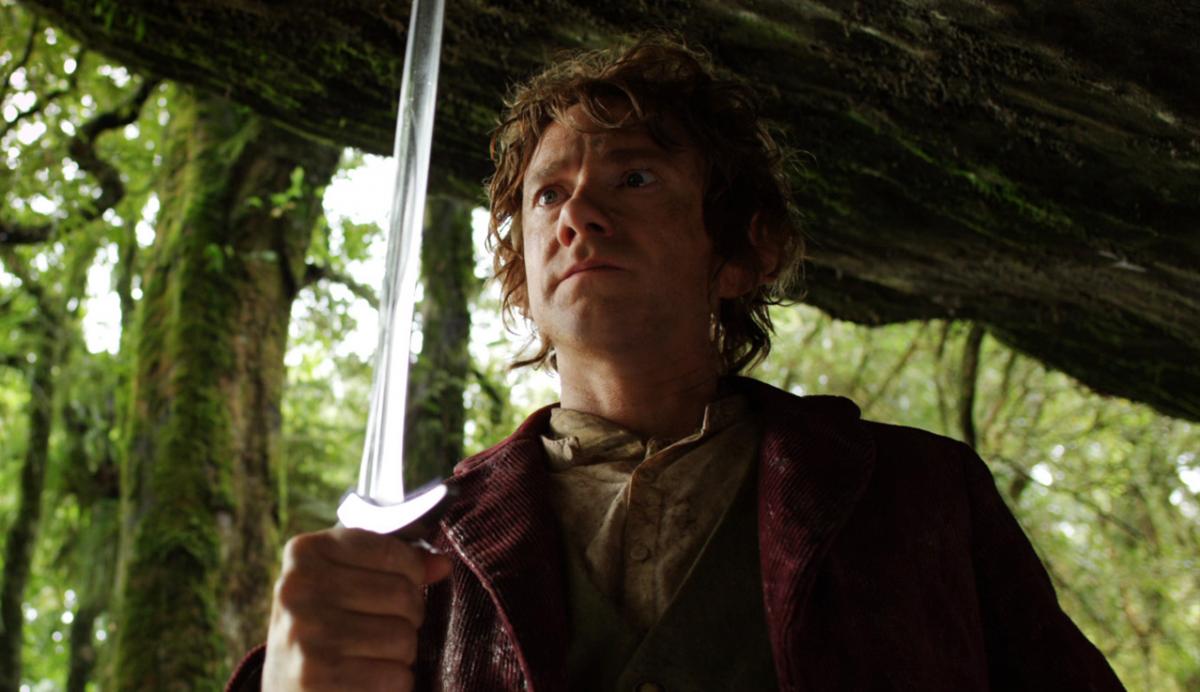
Jackson and his colleagues have created a purist's delight, something the millions of die-hard fans of his Lord of the Rings trilogy will gorge upon. In pure movie terms, however, it's also a bit of a slog, with an inordinate amount of exposition and lack of strong forward movement.
But based on its maker, source and gigantic promotional campaign, this first section to the long-awaited prequel to Rings will no doubt mine equivalent amounts of box-office gold, as will its follow-ups next year and the year after that.
Todd McCarthy, The Hollywood Reporter. Read full review here.

The worst thing that could be said about Peter Jackson's fourth cinematic foray into Middle Earth, The Hobbit: An Unexpected Journey, is that it follows suit, being merely good when greatness was anticipated or expected.
Like Bilbo reflecting on his long path from The Shire and what it means to fight for a place to call your own, however, returning to Middle Earth feels right. And if it doesn't quite soar as high in transformative joy or ecstasy as we thought it might… it's still home.
Shawn Adler, Movieline. Read full review here.
Although some of the locations are identical, everything is brighter and lighter here.
In the 3-D at 48 frames per second that The Hobbit is intended to be screened in, this film shines in a manner that we have never seen before ....
... Most people I asked said they adjusted to the effect after a few minutes, and then settled in and started to enjoy the film. But in two and three quarter hours, I didn't feel that old familiar joy of being immersed in a picture. I could only watch The Hobbit move across the screen, I was never caught up in the story in the way that I am with the films I love.
Graeme Tuckett, Dominion Post. Read full review here.

The picture ends well with two major action set pieces as well as a run-in with Smeagol. Bilbo is finally accepted by his Dwarf comrades and they lean heavy on this being a quest to return home, rather than just capturing gold. You’ll leave with a smile, even if you spent a good portion of the past three hours yawning.
Jordan Hoffman, Screen Crush. Read full review here.

As it turns out, it's possible for an image to look so clear that it no longer looks real. Or so real that it takes you out of the film. As in: that film set looks like ... a film set. Put it this way: the picture is so clear that in one scene I could see Ian McKellen's contact lenses.
Is Peter Jackson right that, even if it takes some time to get used to watching a film in 48 frames per second, you eventually do grow accustomed to it?
The most troubling aspect was that the first 10 minutes of the film looked sped-up.
Have you ever watched old footage of Babe Ruth running the bases back in 1927? Well, imagine that, only with the clearest picture that you've ever seen. After my screening, I talked to other writers who had noticed the same thing. My understanding is that it took our brains a few minutes to adjust to the new format, and this was the resulting sensation. It's really quite a trip -- because it's not like the voices are sped up. And the voices certainly sync with the video, but, still, everything looks fast. Then, after a few minutes, the speed returned to normal.
Mike Ryan, Huffington Post. Read full article here.

The lush green hills, often captured by a roaming virtual camera, stand out more than individual performances or various plot twists.
If you're willing to just go with it, The Hobbit: An Unexpected Journey is a competent ride, but as a whole it lacks purpose, giving the impression of a television program in its later seasons still chugging along while fully aware that it has peaked.
Eric Cohn, IndieWire. Read full review here.

The change from 24 frames per second to 48 frames per second is HUGE. It completely changes what every image looks like, the movements, the tone, everything is different.
It looked like a made for television BBC movie.
It looked like when you turn your LCD television to the 120 hertz up-conversion setting.
It looked uncompromisingly real — so much so that it looked fake.
More noticeable in the footage was the make-up, the sets, the costumes. Hobbiton and Middle Earth didn’t feel like a different universe, it felt like a special effect, a film set with actors in costumes. It looked like behind the scenes footage.
The movement of the actors looked… strange. Almost as if the performances had been partly sped up. But the dialogue matched the movement of the lips, so it wasn’t an effect of speed-ramping.
It didn’t look cinematic. Not at all, even with a top filmmaker like Peter Jackson at the helm.
Peter Sciretta, Slashfilm. Read full article here.
Sign up to get the latest stories and insights delivered to your inbox – free, every day.